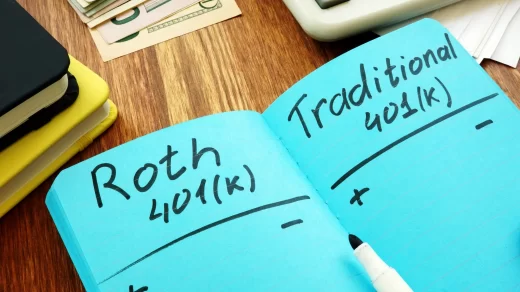A backdoor Roth IRA is a technique for high-income earners to work around the income limits on IRA contributions. This allows them to continue to contribute to an IRA even though their income is above the limits imposed by the Internal Revenue Service.
Limits on IRA Contributions
In 2022, most people are allowed to contribute up to $6,000 to a traditional IRA or Roth IRA. You can contribute an additional $1,000 if you are age 50 or older.
However, if you contribute to a 401(k) or if your income is above certain limits, the amount you can contribute to a traditional IRA or Roth IRA is limited. It gets complicated quickly (see here for a full explanation of IRA contribution limits).
The backdoor Roth IRA strategy is a way to work around this.
How To Make a Backdoor Roth IRA Contribution
It’s important to note that a backdoor Roth IRA is not a type of account; it’s not a separate Roth IRA account. It’s really a special contribution to your Roth IRA. Here’s how I do it.
First, I make a non-deductible contribution to my traditional IRA account. I won’t claim a tax deduction on this contribution when I file my federal income taxes.
Second, I transfer this contribution to my Roth IRA account. This counts as a Roth IRA conversion.
I can’t contribute directly to my Roth IRA because my income is too high, but with this two-step move, I have effectively made a contribution to my Roth IRA.
Special Considerations: Things to Watch Out For
There are FOUR things I keep in mind when I make backdoor Roth IRA contributions:
- If my initial traditional IRA contribution has a gain and I transfer that entire amount–including the gain–to my Roth IRA, I will have to pay taxes on the gain. So I just leave my contribution in cash, I don’t invest it. That way, this is not a problem.
- There is some debate about how long you should leave the contribution in the traditional IRA before making the conversion. This is because the backdoor Roth IRA isn’t really codified in the law–it’s not something that was intentionally created or allowed by Congress. It’s a loophole in the law. Because of this, some people say you should wait a year to do the conversion so that you can argue that it really is two separate transactions, not one transaction in two parts. Others say you don’t need to wait at all.
- For supreme tax effectiveness, it is important to not have any other money in a traditional IRA. If I did have other traditional IRA money, then the pro rata rule will be in effect and I would end up paying taxes on some of the Roth conversion.
- The backdoor Roth IRA may not be around forever. In late 2021, Congress was debating changing the tax law to specifically forbid backdoor Roth IRA contributions. This did not happen, but now that the topic is up for discussion, it could happen at any time in the future.





1 Response
[…] being able to contribute directly to a Roth IRA has given rise to the backdoor Roth IRA […]